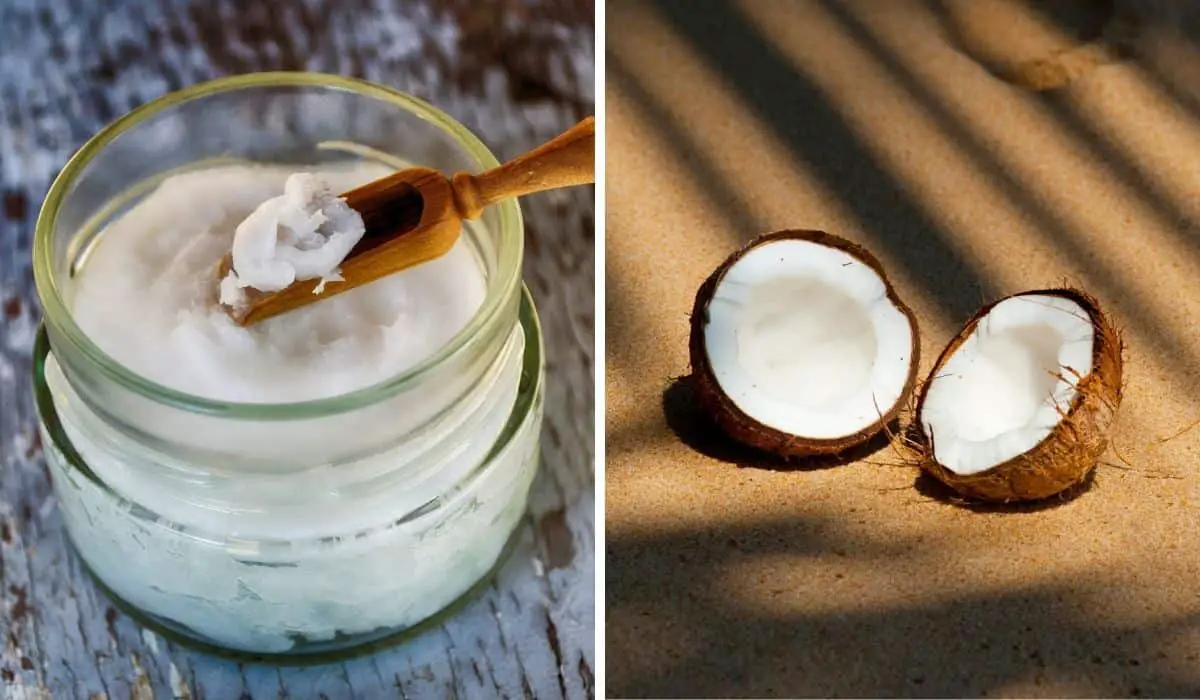Ask any home chef, and they will tell you that there is nothing better than a beautifully seared steak!
And, there is nothing worse than a steak that has been cooked using the wrong oil because this causes the oil to smoke, and the steak will take on a very unpleasant taste as it oxides.
Can you cook steak with coconut oil
Coconut oil is perfect for searing, sauteing, and frying a steak because it has a high smoke point. In addition, coconut oil has a high-fat concentration, which means that this type of oil will stand up to high temperatures very well.
Coconut oil versus desired steak temperature
The following table indicates that the highest smoking point of oil when searing any type of steak should be 450 °F. This makes coconut oil the ideal oil for cooking steak in a pan.
| Steak thickness | Fahrenheit (Searing/pan frying) | Celsius (Searing/pan frying) | Grilling |
|---|---|---|---|
| 1/2 inch (1.27cm) steak thickness | 425°F to 450°F | 218°C to 232°C | Use medium hot coals/no ash |
| 3/4 inch (1.9cm) steak thickness | 360°F to 400°F | 360°C to 204°C | Use medium hot coals/thin layer of ash |
| 1 inch (2.54cm) steak thickness | 325°F to 350°F. | 162°C to 176°C | Use medium low coals/thick layer of ash |
| 1.5 inch ( 3.81cm) steak thickness | 110°F to 120°F | 43°C to 49°C | Use medium low bricquettes |
The difference between BBQing and pan searing with coconut oil
In essence, there is no real difference apart from how the oil is used in both of these cases. But, essentially, coconut oil is ideal for both methods of cooking.
A light drizzle of coconut oil is added to a pan for searing or sauteing, while a relatively bigger portion is added for pan frying. When BBQing meat, the oil is brushed over the grill before a tin foil pan is placed over the grill to cook the meat.
In both cases, the coconut oil can easily hold up to the high temperatures used in both cooking techniques.
How does coconut oil affect the taste of steak
Coconut oil has a very wild taste when tasted on its own. This means that there is no residual taste in the food that has been cooked in this type of oil.
Home chefs can rest assured that steaks can be cooked in coconut oil without the fear that the coconut flavor will be transferred to the meat. The taste after searing the steak will be natural and not wild.
I made steaks once in coconut oil. The taste was great but not as good as if I would use olive oil which is also one of the best cooking oils for steak.
When to use coconut oil and when not to use it
When cooking steak, the method will have a large effect on the texture and taste of the steak, in addition to the type of oil that is being used.
The New York Times states that medium-high is the standard temperature when searing or sauteing meat. In addition, sauteing uses less oil than pan frying, and searing takes more heat than pan-frying.
These are all important elements when cooking a steak, as the oil may be heated up too high, and in the event that you are using the wrong type of oil, you may notice a dark smoke emitting from the pan, which indicates that the oil has started to burn.
Due to its high smoke point and the fact that the ideal temperature to cook steak at is 350 °F, coconut oil may be utilized in all instances that require sauteing, pan searing, and shallow pan frying.
There is one instance in which coconut oil should not be used to cook meat with. To be more specific, coconut oil should be discarded after it is first used. In other words, it should preferably not be used a second time to sear, saute, or pan fry.
Apart from avoiding the reuse of coconut oil, there are a few other reasons why this oil should not be used when cooking red meat.
Oil in the pan or oil on the steak
There is a key to cooking the perfect steak. Many professional and home chefs agree that it may be better to oil the meat, as opposed to heating oil in the pan, before placing the meat in the heated oil.
There is an important reason for this:
Putting coconut oil directly on the meat before searing or sauteing it will ensure that you get that perfect outer texture when the meat has been fully cooked. In addition, it helps prevent the meat from sticking to the hot pan once you start searing or sauteing.
Can overheated coconut oil be salvaged?
No. Once the oil reaches its burning point, many of the beneficial nutrients and phytochemicals that are found in most unrefined oils are lost and/or destroyed. Always discard harmful burnt oil as it may cause serious health problems if you reuse it.
What is cooking oil smoke point
According to the University of Penn State, the smoke point of oil is also known as the burning point of oil. It refers to the point when oil is heated up and is no longer safe as it starts to release free radicals that begin to react with oxygen-forming compounds. The result of which can be very harmful to humans.
In addition, it is when cooking oil reaches a specific temperature and stops shimmering but starts to smoke. This can happen from a fairly low temperature such as 325 °F to a relatively high temperature such as 520 °F.
So you may be wondering:
“What is the coconut oil smoke point?”
As per the Washington Post, there is refined and unrefined coconut oil.
Unrefined coconut oil has a relatively low smoking point of 350 °F which may mean that it is not ideal for any serious type of frying, while unrefined, dry-expeller pressed coconut oil has a smoking point of between 400 °F and 450 °F, similar to corn oil.
The benefits of cooking with coconut oil
According to Healthline.com, there are several health benefits associated with cooking with coconut oil.
To start, coconut oil contains a good amount of fatty acids, of which 90% is saturated fat. This means that coconut oil is able to withstand oxidation which occurs when cooking food at high temperatures.
There are many health risks associated with oxidation, and it should ideally be avoided when searing, sauteing, or frying meat or other food types. The risk of oxidation can be avoided by using cooking oil that has a high smoke point or at least a high enough smoke point in relation to what is being seared.
Furthermore, Healthline.com explains that coconut oil contains high amounts of medium-chain fatty acids, which are very good for your health.
Other health benefits include the fact that coconut oil may improve blood lipids and is rich in lauric acids. When taking these health benefits into consideration, it can easily be inferred that the use of coconut oil when cooking, searing, sauteing, or frying steak is very beneficial.
Key take away
The important fact is that coconut oil is ideal for cooking meat in a cast iron skillet or a pan over medium to high heat, as coconut oil has a high smoking point.
There are no flavors imparted onto the meat from the oil, but there are a plethora of health benefits associated with using this type of oil when cooking meats.

